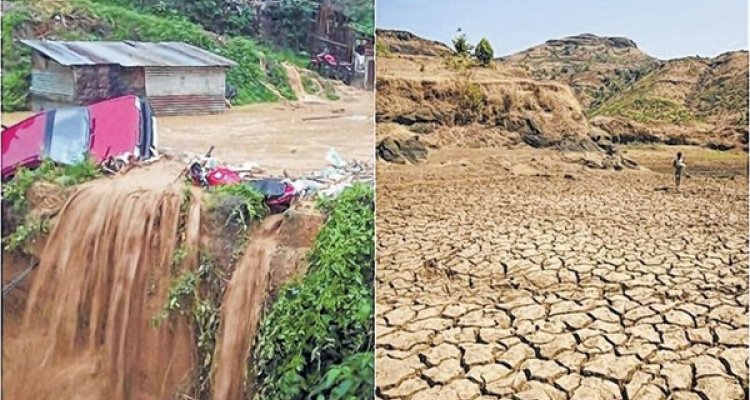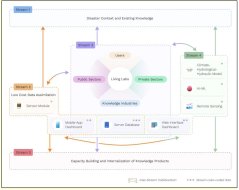
Project
Low-cost Disaster & Emergency Services for Communities At Risk (LODESTAR)
LODESTAR brings together what experts, citizens and city authorities know about disaster management in learning workshops, so we can better forecast extreme situations and issue early warnings. Based on state-of-the-art satellite information and artificial intelligence, LODESTAR will design a ‘dashboard’ for disasters, with easy-to-follow instructions, to reduce the impacts of multi-hazards (floods and periods of droughts) on citizens. The consortium will implement and pilot the approach in different cities and regions of India and the Netherlands.
Introduction
The frequency and intensity of extreme and compounded events are predicted to increase. The impacts of climate change and related anthropogenic activities exacerbate vulnerabilities where protections fall short, or the adaptive capacity of the communities is low. Despite several state and autonomous efforts for disaster management, and early warning systems (EWS) predicting pluvial and fluvial floods, communities and agencies struggle to cope with extreme precipitation and drought events. Even in drought mitigation, substantial gaps remain, concerning forecasting and early warning, considering the slow onset of the event. Today, efforts for better disaster preparedness and several EWSs are operational in India. These systems, however, lack sufficient lead times for disaster preparedness, accuracy, are dedicated to single hazards only, and do not integrate stakeholder (citizens and impacted communities) knowledge. There is therefore scope to develop a robust integrated EWS that provides multi hazard information (MH-EWS) far in advance. This system should also amalgamate stakeholder knowledge and feedback into research, development, implementation and operation of EWSs—making these systems socially inclusive and resonate with the ground reality—as highlighted in the Sendai Framework for Disaster Risk Reduction.
Project description
LODESTAR intends to create a design for a MH-EWS by integrating cost-effective sensors for hydro-meteorological data assimilation, an ensemble of models (AI-ML, process-based climatic-hydrologic-hydraulic) to improve the system’s lead time, reliability and accuracy, and consequently, enhance the resilience of communities at risk (Figure 1). While several EWSs exist, they tend to be top-down; LODESTAR will employ a living labs approach for innovative, participatory, scientifically supported, socially acceptable solutions that lead to knowledge co-creation, and mitigating the social, economic and environmental impacts of disasters. This is because risk communication typically takes place in a social context and community involvement and volunteerism is a form of social capital or communal virtue that can potentially assist disaster management institutions in enhancing their capacity to reach the maximum population at times of flood risk.
LODESTAR will be connected to several flagship programmes of the Government of India (GOI). For example, Digital India (use of digital technologies to improve management, enhance flood and drought forecasting, and improve EWS), Smart Cities (technology, data, and citizen engagement to create more livable and sustainable cities for the future), Swasth Bharat (promoting health and well-being), and STI policy (facilitate the diffusion and adoption of new technologies). LODESTAR also aligns with the flood protection programme (HWBP) under the aegis of the Dutch Delta Programme. Thus, effective disaster management, which LODESTAR proposes to do, will contribute to the progress of SDG 6, 11, and 13 targets.

Figure 1. Project
design of LODESTAR